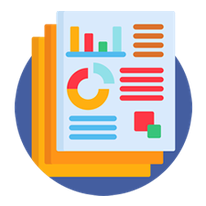Key Features:
No. of pages: 76
Abstract:
Mobile phones are nowadays, far more than merely communication devices. In particular, Smartphones and Tablets are products that help to make our works and everyday life easier. Along with the advance in technology and popularity of these devices, the use of mobile applications increased enormously in the last few years.
Based on new techniques like Global Positioning System (GPS) and sensors, like compass and accelerometer, that can determine the orientation of the device, location-based applications coupled with augmented reality views are possible. In the context of this project, a navigation system that incorporates mobile application for Tai Solarin University of Education is developed. The system architecture and design were presented.
The technologies used for the implementation of the application include Google Map API, HTML, Android development kit and Intel XDK. The resulting application enables the user to find paths to specific locations and provide location-based information on buildings, road and other facilities in the campus. This application developed offers visitors the ability to explore university campus facilities via mobile devices
Table of Content:
Title page i
Certification ii
Dedication iii
Acknowledgement iv
Table of Contents v
List of Table and Figures viii
Abstract ix
CHAPTER ONE
INTRODUCTION
1.1 Background to the study 1
1.2 Motivation 2
1.3 Problem Statement 3
1.4 Aim and Objectives 3
1.5 Scope of Study 4
1.6 Limitations of Study 4
1.7 Definition of Technical and Conceptual terms 4
CHAPTER TWO
LITERATURE REVIEW
2.1 Overview of Navigation System 6
2.2 Geographic Information System 8
2.2.1 Describing Geographical Data 9
2.3 Location Tracking on Mobile Device 11
2.3.1 GPS-Based Positioning 12
2.3.2 Wi-Fi-Based Positioning 14
2.4 Related Works 15
2.4.1 Oregon University App 15
2.4.2 Project Glass 17
2.4.3 UNIOSUN Navigation System 18
2.5 Summary of Literature Review 19
CHAPTER THREE
METHODOLOGY AND DESIGN
3.1 Introduction 20
3.1.1 Research Methodology 21
3.1.2 System Methodology 21
3.2 Requirement Gathering and Analysis 21
3.2.1 Fact Finding Method 21
3.2.2 Analysis of existing systems 22
3.2.3 Functional requirements of the proposed system 23
3.2.4 Non-Functional requirements of the proposed system 24
3.3 System Design 27
3.3.1 Process Model 27
3.3.2 Choice of Process Model and its Justification 29
3.3.3 Design Techniques 30
3.3.4 User Interface Design 33
3.3.5 System Architecture 33
CHAPTER FOUR
SYSTEM DEVELOPMENT AND IMPLEMENTATION
4.1 Introduction 36
4.2 Development Environment 36
4.3 Technologies Used 37
4.3.1 HTML5 38
4.3.2 CSS 38
4.3.3 JavaScript 39
4.4 Tools Used 41
4.4.1 Intel XDK 41
4.4.2 Firebug 2.0 Debugging Tool 41
4.5 Third Party Plugins Used 41
4.5.1 jQuery 41
4.6 System Application Interface Screenshots 42
4.6.1 Main Menu 42
4.6.2 Search Form 43
4.6.3 Map View 44
4.7 Summary of System Development 46
CHAPTER FIVE
SUMMARY AND CONCLUSION
5.1 Summary 47
5.2 Conclusion 47
References 49
Appendix 54
LIST OF TABLE AND FIGURES
Fig. 2.1 GIS Latitude and Longitude 9
Fig. 2.2 GIS – Projection Surfaces 10
Fig. 2.3 GIS – Projection Problems 11
Fig. 2.4 Intercepting Spheres 13
Fig. 2.5 Screenshot of Oregon University App 16
Fig. 2.6 HUD of Project 17
Fig. 2.7 Google Glass Explorer Edition 18
Fig. 2.8 UNIOSUN Navigation System 19
Fig. 3.1 A Typical Waterfall Model 30
Fig. 3.2 Use Case Diagram of the system 31
Fig. 3.3 System Architecture of the Campus Navigation System 34
Fig. 4.1 (a) Main Menu/ Hybrid Map, (b) Main Menu/ Road Map 43
Fig. 4.2 (a) Empty Search Form, (b) Populated Search Form 44
Fig. 4.3 Multi-touch Gestures: (a) Pinch, (b) Spread, (c) Scroll 45
Fig. 4.4 (a) Hybrid Map Activity, (b) Road Map Activity 45
Table 4.1 Development Environment 36
Buy Now
